Viking artefact found in Norfolk field sells for £15,000
- Published
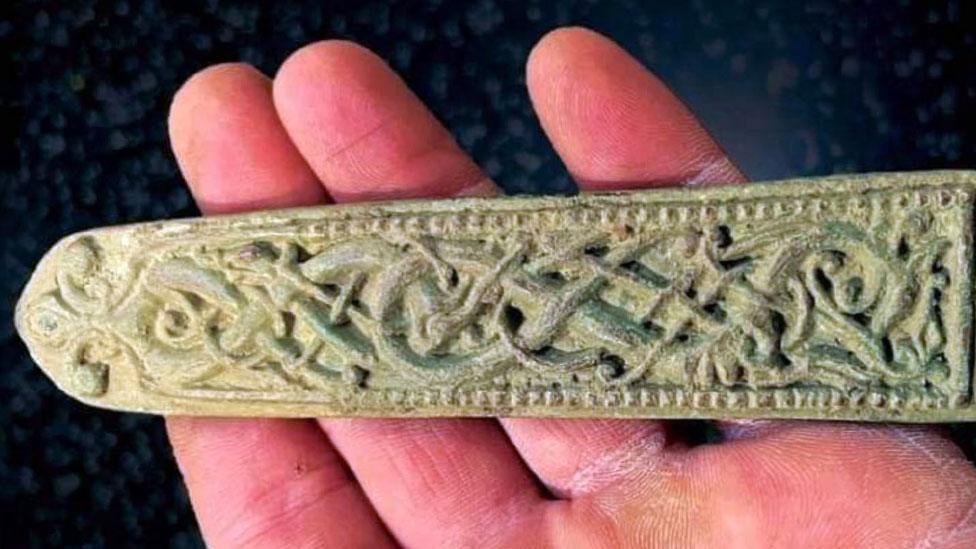
Experts believe the carvings depict creatures from Viking mythology - the world tree Yggdrasil with the monstrous serpent Nidhogg
A Viking artefact used to craft decorative motifs for military helmets has sold at auction for £15,000.
Metal detectorist Jason Jones, 44, made the find in a field near Watton in Norfolk in January, having previously found two medieval silver coins there.
The bronze artefact, called a die, was bought by a UK collector at an auction at Noonans in London.
Mr Jones, from Norwich, said he was going to share the money with the landowner.
He said he bought a metal detector for his son Rio's 15th birthday four years ago and within weeks the whole family were detecting every weekend.
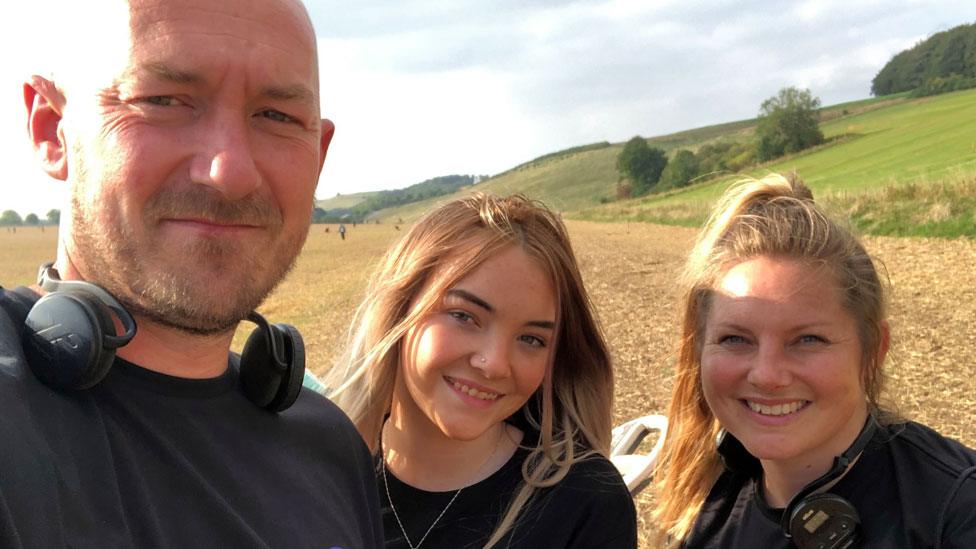
Jason Jones and his family including daughter Ela (middle) and wife Lisa (right) became hooked on metal detecting four years ago
He found the intricately carved bronze die, which was probably used to add to the cheek or nose guards of a Viking helmet, using a back-up detector after forgetting to charge his main one.
He said he had returned to the area where he had previously found two coins and got a "loud signal" at a depth of just two inches (5cm).
His wife Lisa, who was searching with him, "was speechless when she saw it", he said.
"Neither of us had any idea what it could be, but that evening after posting a picture on Facebook we realised it was Viking in date and notified the local archaeologist to have it recorded," he said.
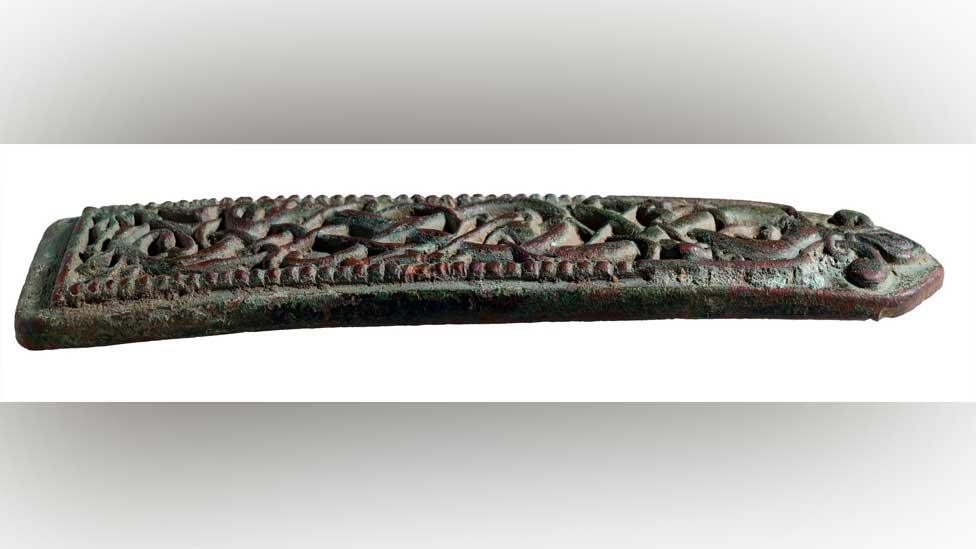
The bronze artefact, called a die, was found in a field near Watton in Norfolk
Nigel Mills, from Noonans in Mayfair, said the tapered object was 14cm (5.5in) long and the design was probably based on Norse mythology.
"This is an intricate 11th Century Urnes style ornamentation possibly representing the world tree Yggdrasil with the monstrous serpent Nidhogg intertwining within its roots," he said.
"At the bottom is a fleur-de-lis which appears to form the tail of the serpent.
"The die would have been used to make a stamped foil of thin metal which would display the pressed-out image.
"From its find spot, the date and design, it is possible that the die was used on a Viking iron helmet to make ornamentation to the cheek guards."

Follow East of England news on Facebook, external, Instagram, external and Twitter, external. Got a story? Email eastofenglandnews@bbc.co.uk or WhatsApp us on 0800 169 1830
Related topics
- Published29 June 2023
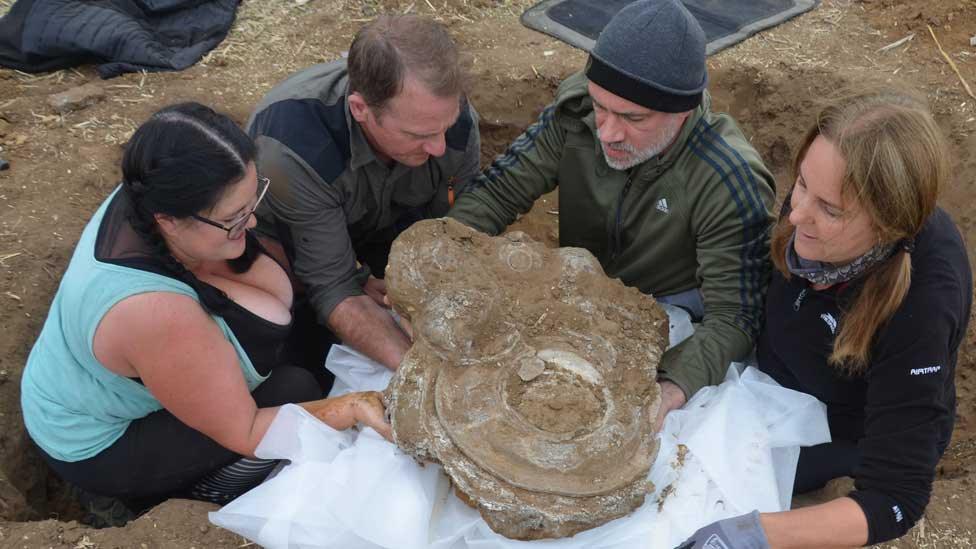
- Published22 June 2023

- Published30 August 2022

- Published17 August 2022
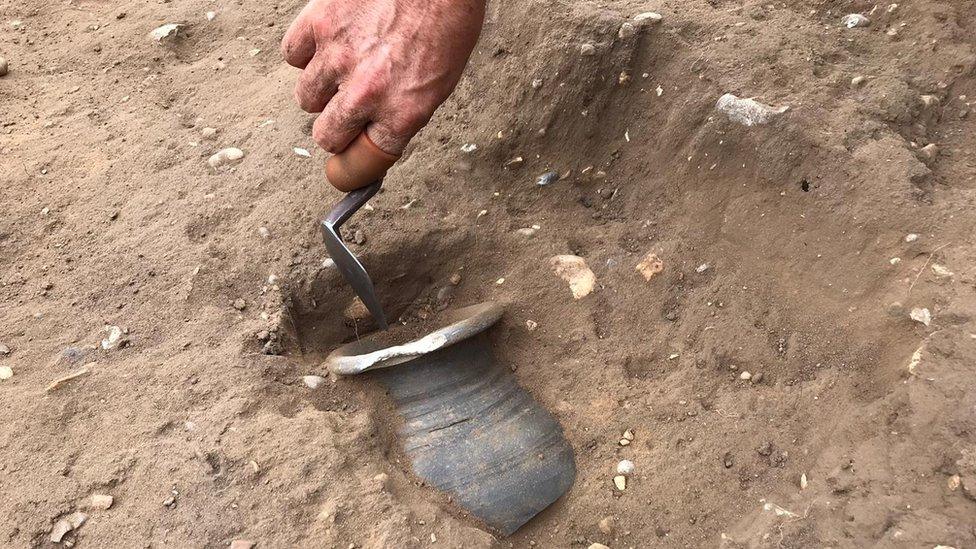
- Published2 February 2022
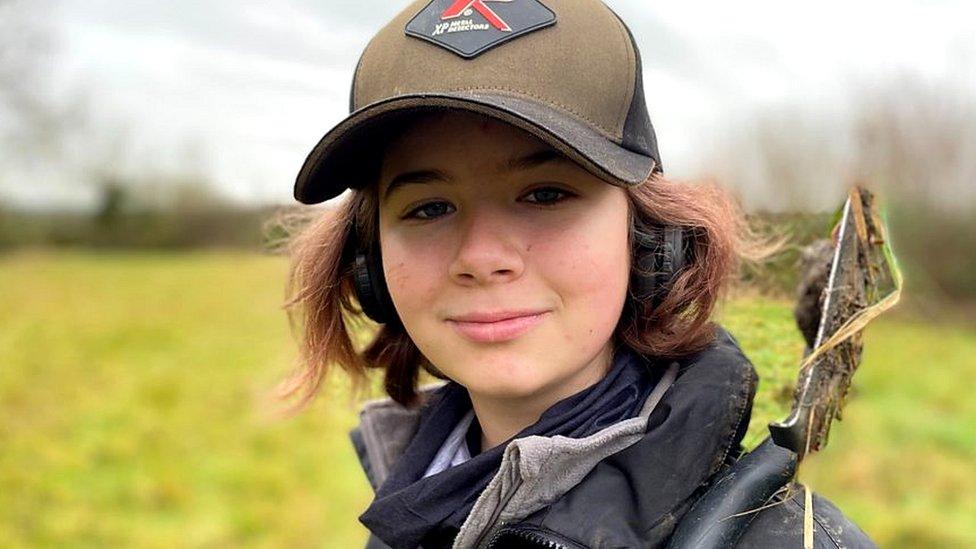
- Published11 January 2022

- Published4 September 2021
